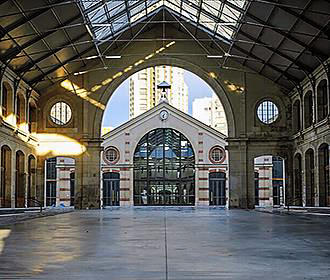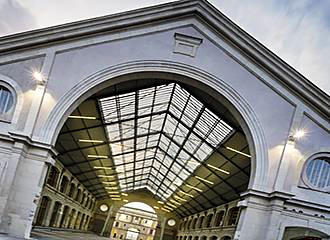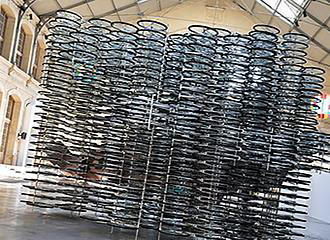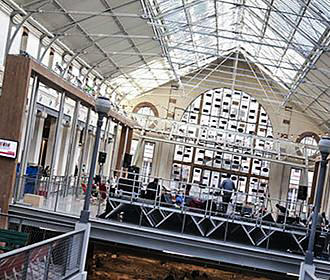History of the Centquatre Building in Paris
Le Centquatre is now a cultural art centre in Paris that first opened in 2008, however, the building was originally a funeral parlour and has a rich history.
The Beginnings of the Funeral Service Building
The Archbishop of Paris was responsible for burials in the city back in the 1800s and in 1870 he ordered a new building to be constructed to accommodate all major aspects of a funeral service.
The site chosen was an area known as Les Petits Noyers, which was close to the railways tracks going to the Gare de l’Est train station in the 19th Arrondissement of Paris, and construction began in 1872 under the supervision of the then Chief Paris architect, Victor Baltard.
This large building was constructed in a style similar to that of other industrial architectural buildings of the time utilising a cast iron frame, glass and brick that had two large halls, loading bays, stables for the horses, an area for the coffins, hearses, etc, and it was finally inaugurated in 1874.
The main hall was where coffins were produced along with the catafalques, which are like the raised platforms that a body or coffin would be placed on for the funeral ceremony, and the other hall contained the hearses and funeral chariots.
Yet the basement was home to the stables that housed approximately 300 horses, the water and their feed, along with several thousand coffins that had already been produced.
But there were also workshops within the halls where people such as carpenters, painters, masons, etc worked to provide funeral ornaments, head stones and much more, which meant there were over 1000 people working here.
The Centquatre funeral service building in the 20th Century
Originally all funerals had to be approved by the church and state, and there were major restrictions in place, such as women who had been divorced were only originally allowed to be buried at night and suicides were also banned.
But this all changed in 1905 when the church and state separated, and this meant that funerals were now the responsibility of the municipality, which also meant that anyone, no matter what their religion or the circumstances, could have a proper funeral.
And so, the Centquatre building saw approximately 27,000 hearses leaving here each year and at its peak there were around 1400 people working here, mainly men and only around 40 women, but contrary to popular belief, there was actually no mortuary on the site.
However, bodies of soldiers repatriated from World War II, the First Indochina War and the Algerian War were held here, where the families could come and visit, and it was only after World War II that the municipal funeral service became motorised with one hall now accommodating the funeral hearses and the saloon cars, along with workshops for the mechanics.
The end of the funeral building and its new beginnings
The funeral services had become a public sector monopoly, but this ended in 1993 with a law that was passed through a reform instigated by the French Senator Jean-Pierre Sueur, which meant that there could be competition and also guarantees of transparency for families.
However, with this change, the extremely large funeral services building started to see a major decline, but it was listed as an historical monument in Paris in the January of 1997, yet it was eventually closed in 1998 having declined even further.
But the Mayor of Paris decided to place the building within an urban renewal project so that it could be restored and utilised once again, rather than falling into disrepair or being destroyed.
And so, in 2003 the go ahead was given to restore the building with a Paris based firm whom the city felt best respected the character of the site and eventually Le Centquatre was finally inaugurated in 2008.



